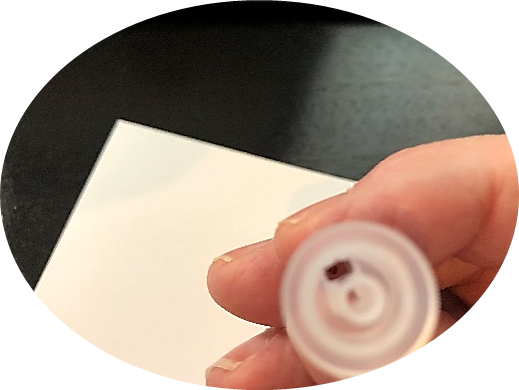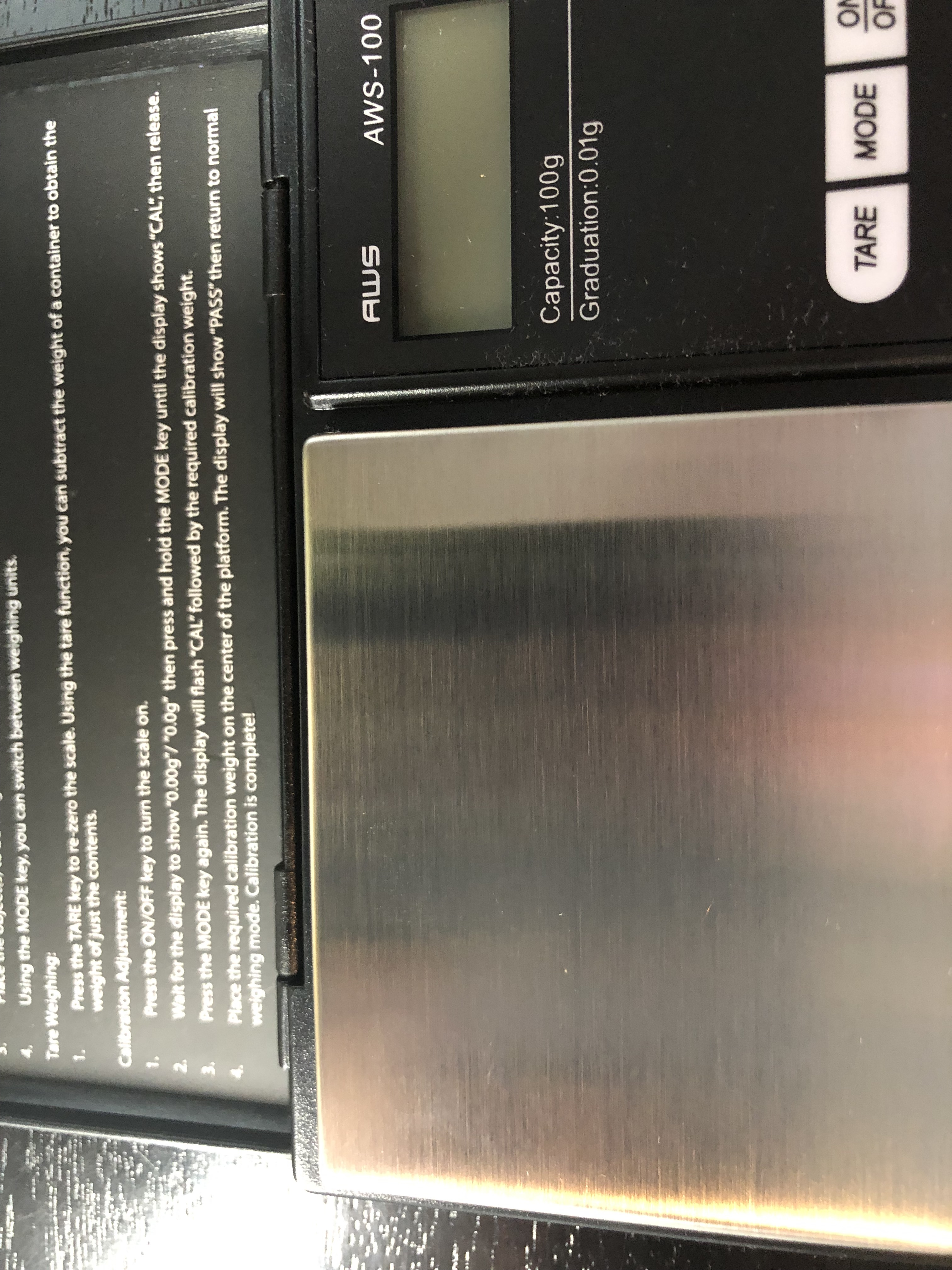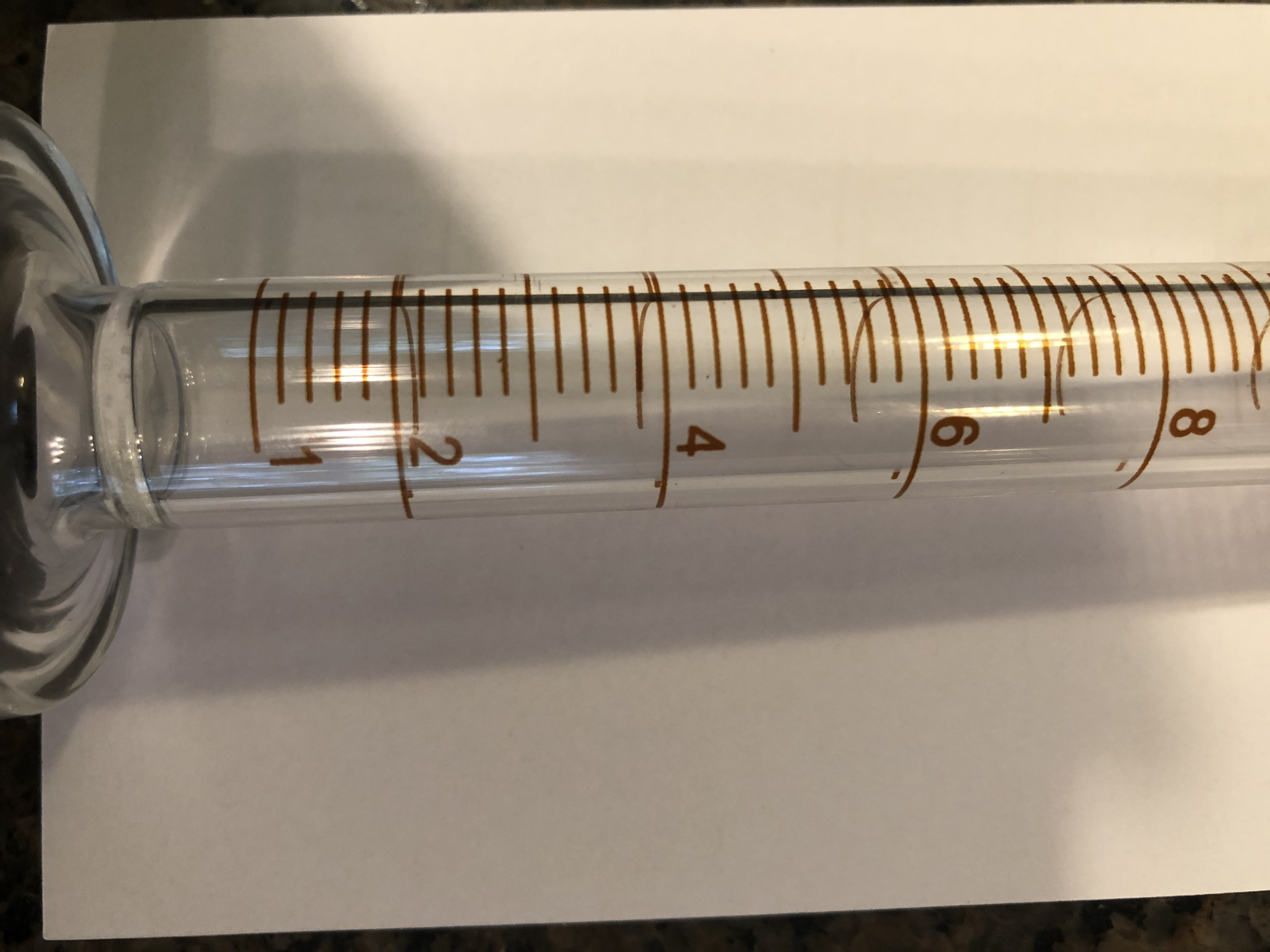Not all drops are created equal!

Are you an aromatherapist or an aromatherapy enthusiast who creates blends by the drop method? That was how we were taught, right? The problem is that not all essential oil drops are the same size and if we are not aware of this, it can skew the formula.
How big is a drop of essential oil?
The size of a drop is based upon the viscosity of the liquid. For example, a drop of water will be smaller than a drop of vegetable oil. In the photo below, we have three bottles, each with 20 drops of essential oil. The first bottle has 20 drops of lemon (Citrus × limon) essential oil, the second bottle has 20 drops of German chamomile (Matricaria recutita) essential oil, and the third bottle has 20 drops of patchouli (Pogostemon cablin) essential oil. I used a pipette, rather than the orifice reducer, to add the essential oils to each bottle (more about this in a minute!). We can clearly see that the bottle holding the patchouli essential oil is almost full, the bottle containing the German chamomile essential oil is about two-thirds full, and the bottle containing the lemon essential oil is about one-third full. These are significant differences!

Orifice reducers affect essential oil drop size
 Orifice reducers can play a role in drop size. You will almost always find orifice reducers in essential oil bottles because they allow one drop at a time to be dispensed. They also help to reduce the amount of oxygen that can get into the bottle. However, not all orifice reducers are the same. Some have the stem at the side, others have the stem in the middle. The stem is where the essential oil will make its way out of the bottle, through the hole at the top. What often gets overlooked is the “other” hole in the orifice reducer. This small hole is located beside the stem and is meant to allow air to pass into the bottle, which regulates the flow of the liquid. When the air hole is positioned at the top, the essential oil will pour out more quickly. This is helpful to ensure that thicker essential oils can be dispensed more easily; however, with thinner oils, you may end up with more drops than you planned for.
Orifice reducers can play a role in drop size. You will almost always find orifice reducers in essential oil bottles because they allow one drop at a time to be dispensed. They also help to reduce the amount of oxygen that can get into the bottle. However, not all orifice reducers are the same. Some have the stem at the side, others have the stem in the middle. The stem is where the essential oil will make its way out of the bottle, through the hole at the top. What often gets overlooked is the “other” hole in the orifice reducer. This small hole is located beside the stem and is meant to allow air to pass into the bottle, which regulates the flow of the liquid. When the air hole is positioned at the top, the essential oil will pour out more quickly. This is helpful to ensure that thicker essential oils can be dispensed more easily; however, with thinner oils, you may end up with more drops than you planned for.
If I haven’t convinced you yet that drop sizes can be different, let’s consider the range in sizes of orifice reducers. These can vary from 0.55 mm up to 1.15 mm. Imagine if you are calculating your drops as equal when one essential oil has a 0.55 mm reducer and another has a 1.15 mm reducer.
The best ways to measure essential oils
 When making aromatherapy blends, the most accurate method of measurement is by weight. This compares apples with apples and eliminates the variables such as essential oil viscosity and orifice reducer size variations. The scale doesn’t need to be terribly expensive, but you will need a scale that measures to 0.01 grams. Several years ago, I purchased five different jewelry scales, all of which measured to 0.01 grams, to test them for accuracy. They ranged in price from $14.50 to $21.00 CAD. Each measured with the same degree of accuracy as my much more expensive and much larger scale. Advantages to using a small, calibrated scale (to 0.01 grams) are size, the fact that most fold up to become even more compact, portability, and of course the cost. The main disadvantage to using this type of scale is the weight limitation, which is often only around 500 grams. However, if you are making small blends, this would not be an issue.
When making aromatherapy blends, the most accurate method of measurement is by weight. This compares apples with apples and eliminates the variables such as essential oil viscosity and orifice reducer size variations. The scale doesn’t need to be terribly expensive, but you will need a scale that measures to 0.01 grams. Several years ago, I purchased five different jewelry scales, all of which measured to 0.01 grams, to test them for accuracy. They ranged in price from $14.50 to $21.00 CAD. Each measured with the same degree of accuracy as my much more expensive and much larger scale. Advantages to using a small, calibrated scale (to 0.01 grams) are size, the fact that most fold up to become even more compact, portability, and of course the cost. The main disadvantage to using this type of scale is the weight limitation, which is often only around 500 grams. However, if you are making small blends, this would not be an issue.
 The next most accurate method of measurement is by volume. For this, you will need to purchase several graduated cylinders in various sizes, I recommend 5 ml, 10 ml, 50 ml, and 100 ml. I find these to be helpful if I am making a larger blend; however, the measurement lines on the graduated cylinders are not precise enough for smaller blends. If you notice the image to the right, you can see the line begins at the 1 ml mark, so anything less than that can’t be accurately measured.
The next most accurate method of measurement is by volume. For this, you will need to purchase several graduated cylinders in various sizes, I recommend 5 ml, 10 ml, 50 ml, and 100 ml. I find these to be helpful if I am making a larger blend; however, the measurement lines on the graduated cylinders are not precise enough for smaller blends. If you notice the image to the right, you can see the line begins at the 1 ml mark, so anything less than that can’t be accurately measured.
If you are on our subscriber’s list, you will have received your monthly free recipe in our July newsletter. The recipe called for 4 parts of one essential oil, 3 parts of another essential oil, 2 parts of another essential oil, and 1 part of the last essential oil, for a total of 10 parts. This can be easily converted to grams (weight) or millilitres (volume).
Not on the list? Sign up here to get our monthly newsletter, including your free monthly essential oil recipe!
But what about aromatherapy recipes that are measured in drops?
Does this mean you shouldn’t follow recipes that measure by drops? Not necessarily! If the recipe was formulated by an educated aromatherapist, it is likely he/she has taken the calculations into consideration and made it simple by giving the corresponding drops. However, if you are formulating a blend, then we recommend ensuring accuracy and safety by either weighing or measuring the essential oils you will be using in the blend.
Happy blending!
~ Colleen ~

Article by: Colleen Thompson, Cert Ed, MIFPA, RA®, EOT®, CA
For over 25 years, Colleen Thompson has been a passionate and highly respected aromatherapy educator. She has owned 3 aromatherapy stores and a holistic spa, and she founded Essence of Thyme in 1995, where she mentors budding aromatherapists from all over the world, helping them create their own thriving aromatherapy businesses.
About Essence of Thyme College of Holistic Studies
Essence of Thyme College of Holistic Studies offers 300- and 630-hour professional aromatherapy certification programs that help you grow a successful, fulfilling career by specializing and creating your market niche. Professional Level Certification prepares graduates to become aromatherapy consultants, launch product lines or retail businesses, or provide services as an adjunct to existing holistic health specializations. Master Level Certification and electives are ideal for certified aromatherapists seeking higher education or a path to clinical aromatherapy practice.
All Essence of Thyme programs focus on aromatherapy product development and advanced formulation, evidence-based research, spa and business management, international industry regulatory guidelines, and sustainability and conservation of essential oil and carrier oil-bearing plants.
Our comprehensive, evidence-based programs meet or exceed the criteria set forth by 5 international professional aromatherapy associations. Learn more about our aromatherapy certification programs.


